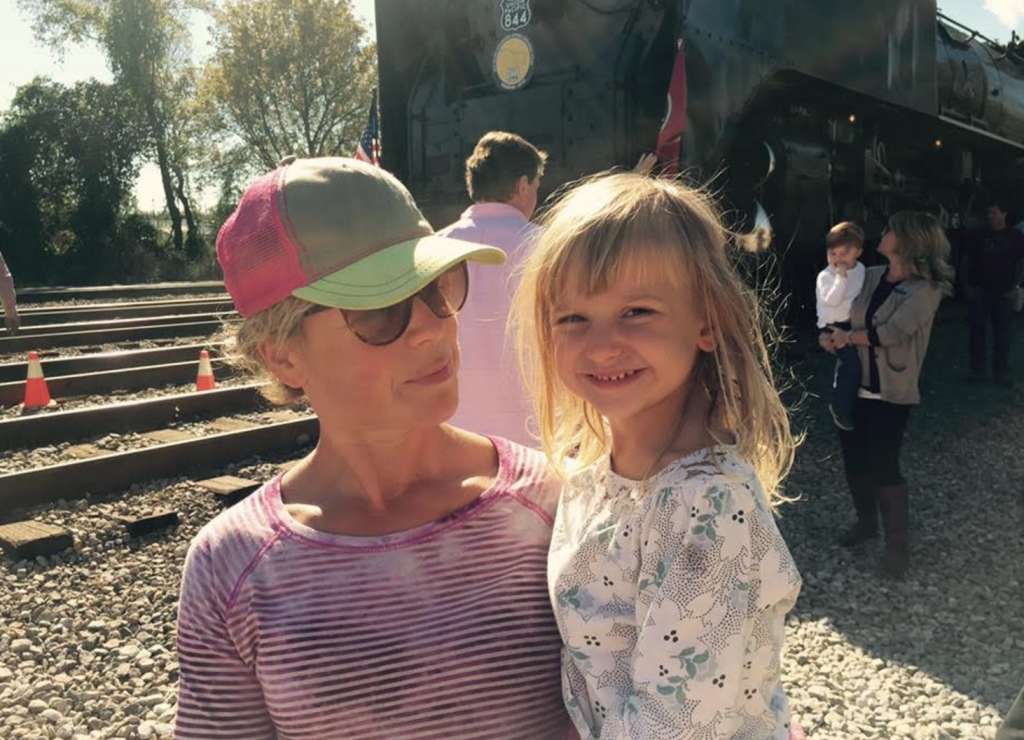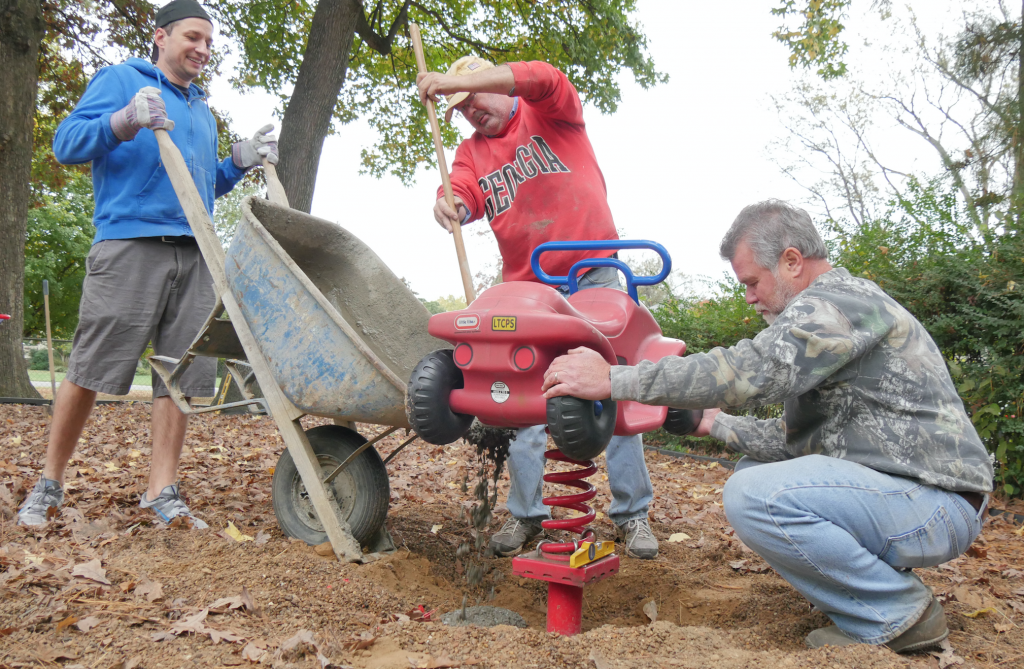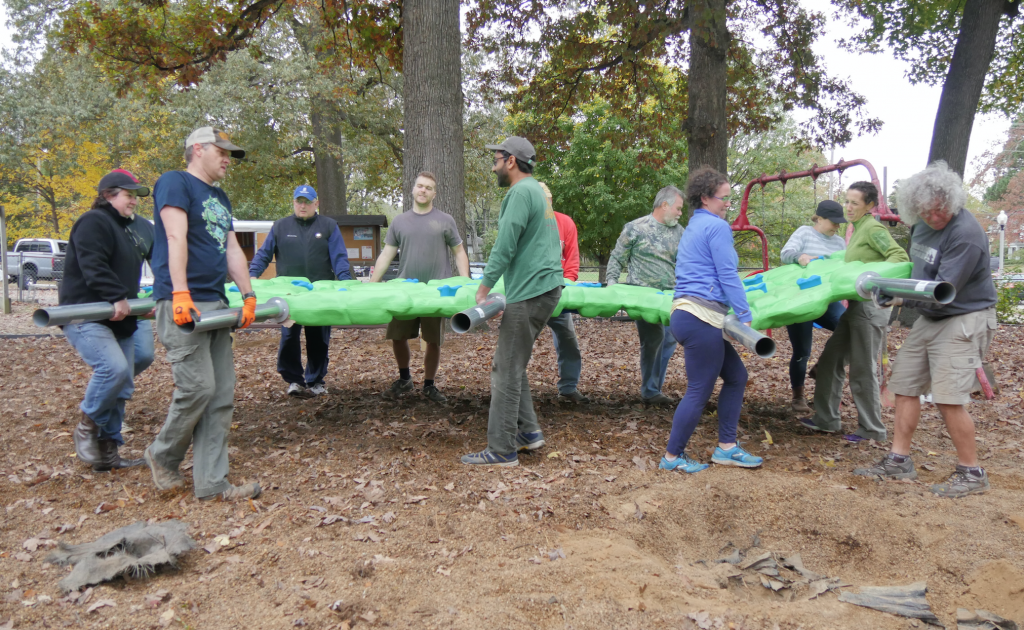The Rainmakers: Lee Forbes-Belue of Trinity Playground Revitalization
Published June 07, 2017
While the average budget for ioby projects is around $4,000, many are larger scale. If you have your sights set high, your budget—and fundraising skills—will have to rise to the challenge.
Crowdfunding large amounts of money on ioby is totally doable, but it takes some extra planning. In our Rainmakers series, we’re sharing stories and tips from Leaders who have successfully raised $10,000 or more for their ioby campaign. Learn how they did it, and how you can do it, too!

Memphis-based graphic artist Lee Forbes-Belue led an ioby campaign to revitalize a beloved neighborhood playground. “Trinity Playground was part of a preschool that closed,” she explains. “Without them, there was really no one to take care of the playground, even though a lot of neighbors used it. It fell into disrepair: there was lots of broken equipment and it needed an overall upgrade. So we raised the money to do that.”
Below, Lee explains how she and her fundraising crew crowdfunded over $14K to restore this neighborhood favorite to its former glory for the next generation of Memphis families.
Q: Who was on your fundraising team?
We were made up of a few parents, the pastor from the church on the lot where the playground is located, and the principal of the new Montessori school that opened up when the old preschool closed. It was a very good mix; it gave us lots of different connections.
Two of the moms in the group were especially well-connected in the community, and one had worked on ioby campaigns before, so that was really helpful. As simple as the process is, it can be intimidating, so we appreciated all her knowledge. Another woman was a grant writer, or something similar, for a living. She kept us on task and super organized, delegating tasks and keeping everyone accountable. That’s something I’d be terrible at!, but she killed it.
Q: Were you already comfortable with asking for money?
I didn’t have much experience with it, and I was not comfortable. But I do use social media, so what really worked for me was writing a very personal, heartfelt Facebook post about what the playground meant to me, and what I knew it meant to other parents, and that really resonated with people. I talked about how this wasn’t just a place where kids played—it was also where parents talked to each other and had little therapy sessions together!
Writing that was one of the few fundraising tasks I felt I could do well. I did also make a banner with a QR code leading to the ioby campaign page that we put up in the playground. But I knew I wasn’t going to call people and ask them for money; I wasn’t going to ask my family to donate. So I put up this post and tagged several friends who I knew would relate and it wound up being very effective. [See the text of Lee’s Facebook post here.]
Q: How did you plan your fundraising?
Someone still had info on file about the person who had helped build the original playground 10 or 12 years before, so we contacted him and explained our situation. We told him about the equipment we wanted and he helped us figure out how much everything would cost, the price of delivery, what we could do ourselves versus what we’d need to hire someone to do, etc. That was how we figured out our budget.
Then we just started asking. I have to say I got some crazy support. Friends of mine in San Francisco gave us $250 just ’cause they’re awesome—I never would have imagined it! Another friend gave me a significant amount because I had supported his projects in the past; it was a reciprocal thing. He doesn’t even have kids.
Remember that support comes in many forms. Not everyone can give $250, but maybe they can give $25. In our case, some folks said they couldn’t give anything, but they appreciated the idea and wanted to come help us with the physical work. People will respond differently.
Also, we didn’t ask for money at year-end, which is when everyone gets hit up. We ran our campaign in the springtime, which I think helped.
Q: How did storytelling factor in?
Our only big storytelling push was the Facebook posts—another woman on our team wrote one, too. I think we were already somewhere around the $8K mark when when did those, and they helped push us to our goal. We must just have really generous neighbors and friends who were moved by reading these personal stories!
We did share the posts around widely; as widely as we could. The fact that so many people responded by donating showed us that the playground really does mean a lot to people—even those whose kids had moved away or who had outgrown it.
Q: What methods did you use to ask people?
I sent several personal emails to friends with a link to the campaign, as well as to some older church members who I have a relationship with and who I thought could afford to donate, and they did. Even though their kids are now older, they used to have a relationship with the playground, and apparently that endured. Interestingly, I don’t think anybody told me “no.” They either gave something or just didn’t reply.
One of our members sent all of us in the fundraising group an email with things to note and do: a schedule with month by month project tasks, a budget breakdown, etc. I don’t think anyone had a call roster, but we stayed pretty organized, thanks to her.
Q: Did fundraising help with community buy-in?
I definitely thought about the project as community building. It brought together parents whose kids go to the playground now, parents whose kids used to go, families who knew the preschool that closed, people from the new school that opened up, church members… I think it helped that we could appeal to people who were familiar with the past of the place and had memories there as well as people who could envision using it in the future.
Q: Any other advice?
Figure out a way to make a personal connection. Write out your personal story. Even if you’re fundraising for something like a new community garden that doesn’t exist yet, there is a way to connect with people about the space and make your point resonate with them. You can focus on yourself and what you love about it, or focus on how you can see other people enjoying it—you just have to forge a point of connection, some common ground. We did it both ways: we remembered what it was like for us, and we also described how we imagined it being for the next generation of kids.


